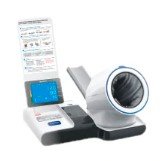Calibrating a Centrifuge for Accurate and Reliable Results in Medical Labs
Summary
- Calibrating a centrifuge is crucial for ensuring accurate and reliable results in a medical lab
- The specific procedures for calibrating a centrifuge involve checking the speed settings, balancing the rotor, and verifying temperature control
- Regular calibration of centrifuges is essential for maintaining the quality of lab tests and ensuring patient safety
Introduction
In a medical lab setting, the accuracy and reliability of Test Results are of utmost importance. One key piece of equipment that plays a vital role in laboratory testing is the centrifuge. A centrifuge is used to separate fluids of different densities or to isolate components within a solution. In order to ensure that a centrifuge is functioning properly and providing accurate results, it must be calibrated on a regular basis. This article will discuss the specific procedures for calibrating a centrifuge in a medical lab setting in the United States.
Checking Speed Settings
One of the first steps in calibrating a centrifuge is to check the speed settings. Different types of centrifuges have different speed settings, and it is important to verify that the centrifuge is spinning at the correct speed for the type of sample being processed. This can be done by comparing the speed displayed on the centrifuge with a known standard, such as an external tachometer or a calibration kit.
Procedure:
- Set the centrifuge to the desired speed setting
- Place a tube containing a known standard solution in the centrifuge
- Start the centrifuge and allow it to run for a specified amount of time
- Stop the centrifuge and compare the speed displayed on the centrifuge with the known standard
- If there is a discrepancy, adjust the speed settings accordingly
Balancing the Rotor
Another important aspect of calibrating a centrifuge is ensuring that the rotor is balanced. An unbalanced rotor can lead to inaccurate results and can also cause damage to the centrifuge. Balancing the rotor involves making sure that the weight distribution of the tubes or containers inside the rotor is even. This can be done by following a specific procedure to check and adjust the balance of the rotor.
Procedure:
- Load the rotor with sample tubes in an evenly distributed pattern
- Secure the rotor in the centrifuge and close the lid
- Start the centrifuge and observe for any vibrations or wobbling
- If there is imbalance, stop the centrifuge and rearrange the tubes to achieve better balance
- Repeat the process until the rotor spins smoothly without any vibrations
Verifying Temperature Control
In some cases, centrifuges are equipped with temperature control features to maintain a specific temperature during the spinning process. Verifying the temperature control of a centrifuge is an important part of the calibration process, especially for tests that require a specific temperature for accurate results. This can be done by using a thermometer to monitor the temperature inside the centrifuge while it is running.
Procedure:
- Set the centrifuge to the desired temperature setting
- Place a thermometer inside the centrifuge next to the sample tubes
- Start the centrifuge and allow it to run for a specified amount of time
- Monitor the temperature displayed on the thermometer and compare it to the set temperature
- If there is a discrepancy, adjust the temperature settings accordingly
Conclusion
Calibrating a centrifuge is a critical step in ensuring the accuracy and reliability of Test Results in a medical lab setting. By following specific procedures such as checking speed settings, balancing the rotor, and verifying temperature control, lab technicians can maintain the quality of lab tests and ensure patient safety. Regular calibration of centrifuges should be a routine practice in every medical lab to uphold the standards of quality and accuracy in laboratory testing.

Disclaimer: The content provided on this blog is for informational purposes only, reflecting the personal opinions and insights of the author(s) on the topics. The information provided should not be used for diagnosing or treating a health problem or disease, and those seeking personal medical advice should consult with a licensed physician. Always seek the advice of your doctor or other qualified health provider regarding a medical condition. Never disregard professional medical advice or delay in seeking it because of something you have read on this website. If you think you may have a medical emergency, call 911 or go to the nearest emergency room immediately. No physician-patient relationship is created by this web site or its use. No contributors to this web site make any representations, express or implied, with respect to the information provided herein or to its use. While we strive to share accurate and up-to-date information, we cannot guarantee the completeness, reliability, or accuracy of the content. The blog may also include links to external websites and resources for the convenience of our readers. Please note that linking to other sites does not imply endorsement of their content, practices, or services by us. Readers should use their discretion and judgment while exploring any external links and resources mentioned on this blog.
